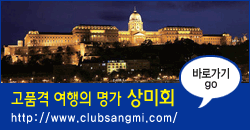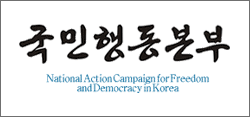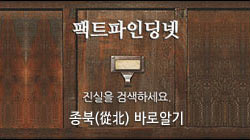By Kim Pyung-woo(former president of the Korean Bar Association)
The irrational impeachment motion is simply lamentable! Although it may seem to be an impeachment motion on the surface, it is actually a public uprising in disguise, according to Kim Pyung-woo, the former president of the Korean Bar Association. The National Assembly votes on the impeachment motion on Friday. If the bill is passed, Korea will end up leaving a number of shameful records in history.
First, an impeachment motion is an undemocratic measure through which the National Assembly can oust a president chosen by voters. It is a political anomaly that happens maybe once every century. But our lawmakers are about to set a new record by seeking to impeach our leader twice in the span of just 12 years. That last time our lawmakers sought to impeach a president was Roh Moo-hyun back in 2004. Second, since the founding of the Republic of Korea in 1948, two out of 11 presidents have faced impeachment. This is the highest level along with the United States. The United States, which created the presidential impeachment system, actually turned to the measure twice in its 240-year history: on former presidents Andrew Jackson and Bill Clinton. Third, if the latest impeachment bill is added, Korea will have seen eight of its 11 presidents face harsh endings. Three resigned (Syngman Rhee, Yoo Bo-seon, Choi Kyu-hah), one was assassinated (Park Chung-hee), one committed suicide (Roh Moo-hyun), two were arrested (Chun Doo-hwan, Roh Tae-woo) and two faced impeachment (Roh Moo-hyun, Park Geun-hye). This probably sets the world’s record in terms of the level of risk faced by incumbent presidents. Fourth, the latest impeachment motion was pursued shortly after an independent counsel was appointed to investigate the massive influence-peddling and corruption scandal involving the president and her longtime confidante, Choi Soon-sil. The independent counsel has yet to even announce his preliminary findings.
Then why did we even bother to appoint an independent counsel? Is there no other option for the National Assembly than a rushed impeachment motion? Fifth, discussions to seek an impeachment motion were held secretly behind closed doors. If this process is compared to a criminal investigation, it can be described as a clandestine probe. An impeachment is the process of driving out a democratically-elected president and a move to overturn the decision of the public. As a result, it is markedly different than an ordinary criminal investigation. The discussions held by lawmakers must be revealed to the public. Discussions held behind closed doors are the same as a closed-door trial. In the United States, the news media offers minute-by-minute coverage of the impeachment proceedings so that the public can voice its opinion to lawmakers ahead of time. Sixth, major street protests seeking the ouster of a country’s leader triggered by revelations of corruption involving a president are commonly seen in Third World dictatorships (the public uprisings in the Philippines and the Middle East). People in such countries take to the streets waving protest banners, because opposition political parties are too weak to keep the leader in check.
But Korea adopted a single-term presidential system in 1987, which did away with dictators. Moreover, the opposition political camp swept general elections held in April of this year and the president is heading into her final year in office. Yet opposition lawmakers are seeking to have the lame-duck president face a criminal investigation by an independent counsel and are triggering the public to take to the streets seeking her impeachment. This is an unprecedented phenomenon in global history. Seventh, people who have worked with a president for many years usually stand by his or her side when that leader faces impeachment. The Uri Party gathered steadfastly around former president Roh when he faced impeachment. But this time, a large number of ruling Saenuri Party lawmakers have actually hopped on the impeachment bandwagon. This is tantamount to desertion and treason in the military during a surprise attack. Such acts of betrayal attest to the level of political ethics to which our lawmakers adhere.
The latest impeachment cannot be referred to as an impeachment. It is simply a second option stemming from the rage felt by the press, opposition lawmakers and the public triggered by the president’s refusal to step down following revelations by the news media two months ago of corruption and influence-peddling involving the president’s close confidante. The process is taking the form of an impeachment proceeding, but it is actually a public uprising. Since adopting a single, five-year presidential term system in 1987, Koreans have democratically elected their leaders and the country was considered as an advanced Asian nation where democracy has firmly taken root. But if the latest incident will be recorded as an odd country where constitutional order broke down in the face of a public uprising. Nevertheless, if the National Assembly votes in favor of impeachment, the ball will be thrown into the Constitutional Court. In other words, a trial will commence. The trial is a judicial proceeding and cannot be handled secretly and hurriedly like the National Assembly did. Months of tedious legal wrangling will take place.
But will the Korean public, which has tasted revolution, be able to watch the process patiently on the sidelines? They will surely hit the streets to hold candle-light protests and petition drives aiming to pressure Constitutional Court judges who weigh the impeachment bill. What is even more worrisome is whether the angered public will be willing to accept a ruling by the Constitutional Court rejecting the impeachment bill. What will happen if the public does not accept the court’s ruling? Martial law or a bloody revolution? Will history repeat itself? The situation facing our country is lamentable. But can the news media and public set their emotions aside and calmly and objectively evaluate the situation which involves corruption involving a close confidante, and judge the president’s actions at the voting booths in December of next year? Is it right to handle such a common problem through a public uprising? The actions of an irresponsible news media, irresponsible politicians and irresponsible protesters are lamentable. Rather, prominent officials in our country, who are watching this event on the sidelines, are lamentable. Is this all we are capable of doing?
(Kim Pyung-woo is an attorney in Korea and the U.S., former president of the Korean Bar Association, and a visiting scholar at UCLA since 2012)
‘억지 탄핵소추’를 痛歎(통탄)한다!
이번 탄핵은 말이 탄핵이지 실제는 탄핵이 아니다. 언론이 두어 달 전에 보도한 최순실의 비리에 격분한 언론, 야당, 시민이 대통령의 下野를 주장하다가 대통령이 사실상 下野를 거부하자 代案으로 탄핵을 하는 것이다. 형식은 탄핵이지만 실제는 民衆革命이다.
언론보도에 의하면 오는 12월9일 국회가 박근혜 대통령에 대한 탄핵소추를 결의한다고 한다. 만일 박근혜 대통령 탄핵소추안이 국회에서 통과된다면, 한국은 세계 정치사에 몇 가지 불명예스러운 기록을 만들 것이다.
첫째, 원래 대통령 탄핵은 선거에 뽑힌 대통령을 국회가 쫓아내는 非민주적 제도이다. 100년에 한 번 있을까 말까 한 정치적 異變(이변)이다. 그런데 우리나라는 2004년 노무현 대통령 탄핵 이후 또다시 대통령을 탄핵하는 진기한 기록을 세우게 된다.
둘째, 한국은 1948년 건국 이래 총 11명의 대통령 중 2명이 탄핵소추되어 미국과 동등한 最多(최다) 대통령 彈劾國(탄핵국)이 된다. 대통령 탄핵제도를 창시한 미국은 240년의 憲政史(헌정사)에서 앤드루 잭슨과 빌 클린턴 두 명의 대통령이 탄핵소추되었다.
셋째, 이번 탄핵소추가 추가되면 한국은 건국 이래 총 11명의 대통령 중 下野 3명(이승만, 윤보선, 최규하), 암살 1명(박정희), 자살 1명(노무현), 구속 2명(전두환, 노태우), 탄핵소추 2명(노무현, 박근혜)으로 총 8명이 수난을 당하는 셈인데, 이는 세계에서 가장 높은 대통령 사고율 국가라는 종전기록을 갱신하는 셈이다.
넷째, 이번 탄핵은 탄핵사유를 밝히기 위해 국회가 特檢(특검)을 설치한 지 며칠도 안 되어 특검의 조사결과를 기다리지 않고, 탄핵소추를 하는 그야말로 순서가 완전히 거꾸로 된 괴이한 탄핵이다. 그러면 특검은 뭐하러 설치했나. 국회가 이렇게 쫓기듯이 탄핵하지 않으면 아니될 무슨 이유가 있나?
다섯째, 이번 탄핵은 국회의 탄핵논의 과정이 사전에 공개되지 않고 극비로 추진, 진행되었다. 일반 형사사건으로 말하면 비밀 수사이다. 대통령 탄핵은 국민이 선거에서 뽑은 대통령을 국회가 쫓아내는 政變이자, 국민의 선거결과를 뒤집는 고도의 정치사건이므로 일반 형사사건과는 그 성질이 전혀 다르다. 국회의 논의 과정이 국민에게 공개되어야 한다. 비밀 논의는 비밀 재판과 같다. 미국에서는 언론이 국회의 탄핵논의 과정을 계속 보도하여 국민들이 자기의 의견을 얼마든지 국회의원들에게 미리 알릴 수 있도록 한다.
여섯째, 대통령의 부패나, 失政(실정)에 대한 불만의 표시로 국민들이 거리에 나서 시위로 대통령의 축출을 요구하는 것은 통상 後進(후진) 독재국가에서 있는 일이다(필리핀의 시민 혁명, 中東의 봄이 대표적인 例). 그런 나라에서는 야당이 대통령의 부패나 실정을 견제하지 못하기 때문에 부득이 국민들이 거리에 나오는 것이다. 그런데, 우리나라는 1987년 이래 대통령 단임제가 시행되어 대통령의 독재는 있을 수 없다. 더욱이 지난 4월 총선 당시 야당이 과반수를 차지하였고, 대통령은 임기 말에 접어들었다. 그런 레임덕 대통령을 겨냥해 거대 야당은, 특검을 추진하고 시위대를 선동하고 종국엔 탄핵까지 한다니…. 세계 역사에 없는 해괴한 일이 아닐까 생각한다.
일곱째, 통상 대통령과 십수 년간 당을 같이 한 사람들은 대통령이 탄핵 공격을 받으면 특별한 사유가 없는 한 탄핵공세를 막는 데 앞장선다. 노무현 대통령 때도 여당인 열린우리당은 굳게 뭉쳐 탄핵 저지에 나섰다. 그런데, 이번 탄핵은 여당 의원 중 상당수가 야당의 탄핵 주장에 동조, 연합한 상태에서 탄핵소추에 들어가는 모양새다. 마치 敵의 기습 공격을 받아 위기에 빠진 자기 측 사령관을 버리고 재빨리 敵軍(적군)에 가담하여 같이 공격하는 반역 장교들과 같다. 정치인들의 이런 파렴치한 배신 행위는 한국 정치인의 한심한 정치 도덕 수준을 세계 만방에 알리는 것이다.
이번 탄핵은 말이 탄핵이지 실제는 탄핵이 아니다. 언론이 두어 달 전에 보도한 대통령 측근 최순실의 비리에 격분한 언론, 야당, 시민이 대통령의 下野를 주장하다가 대통령이 사실상 下野를 거부하자 代案(대안)으로 탄핵을 하는 것이다. 결국, 형식은 탄핵이지만 실제는 民衆革命(민중혁명)이다. 한국은 1987년 이래 단임제 대통령제가 시행되면서 與野간 평화적인 정권교체가 이루어져 아시아에서는 민주주의가 安着(안착)한 선진국가라고 평가되었는데, 이번 사건으로 한국은 민중혁명이 일어나 憲政(헌정)질서가 무너진 이상한 나라로 기록될 것이다.어쨌든 국회가 탄핵을 해 가결되면 공은 탄핵재판소, 즉 헌법재판소로 넘어간다. 다시 말해 재판이 시작된다. 재판과정은 사법절차이므로 국회처럼 후다닥 비밀로 해치울 수 없다. 수 개월간 지루한 法廷攻防(법정공방)이 일어날 것이다.
그러나, 혁명의 맛을 본 시민들이 과연 이 지루한 법정공방 절차를 조용히 지켜보며 기다려 줄까? 필시 이들은 계속 거리로 나와 탄핵지지 촛불시위를 하고 1000만 명 서명운동을 하여 헌법재판관들을 압박할 것이다. 더욱 우려되는 건 헌법재판소가 탄핵소추를 기각하는 판결을 했을 때, 과거 노무현 대통령 때처럼 사람들이 기꺼이 승복할지 여부다. 승복하지 않는다면 그 다음 수순은 무엇인가? 非常戒嚴(비상계엄)인가? 아니면 광란의 流血(유혈)혁명인가?
이렇게 대한민국의 역사는 반복되는 것일까? 슬프다. 언론과 시민이 대통령 측근비리라는 지극히 통상적인 문제에 대해 흥분하지 말고, 좀 더 차분하게 다루면서 내년 12월 大選 때까지 기다려 투표로 평가하면 안 되는 것인가? 또 당연히 그렇게 풀어야 마땅한 문제를 이렇게 혁명하는 방식으로 나라를 뒤집는 소란을 피우다니….
무책임한 언론, 정치인, 촛불 시위대가 痛歎(통탄)스럽다. 아니 그들을 멀뚱멀뚱 지켜보는 무능하고 비겁한 이 나라 지도층이 痛歎스럽다. 이것이 결국 우리들 수준이고 발전의 한계란 말인가!
2016. 12. 6. 김평우
(한국·미국 변호사, 45代 대한변호사협회 회장, 2012년부터 UCLA 비지팅 스칼라)












 Kim Pyung-woo
Kim Pyung-woo








 트위터
트위터 페이스북
페이스북 네이버
네이버




























